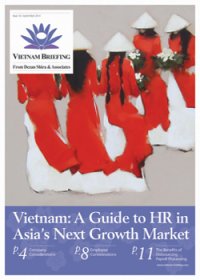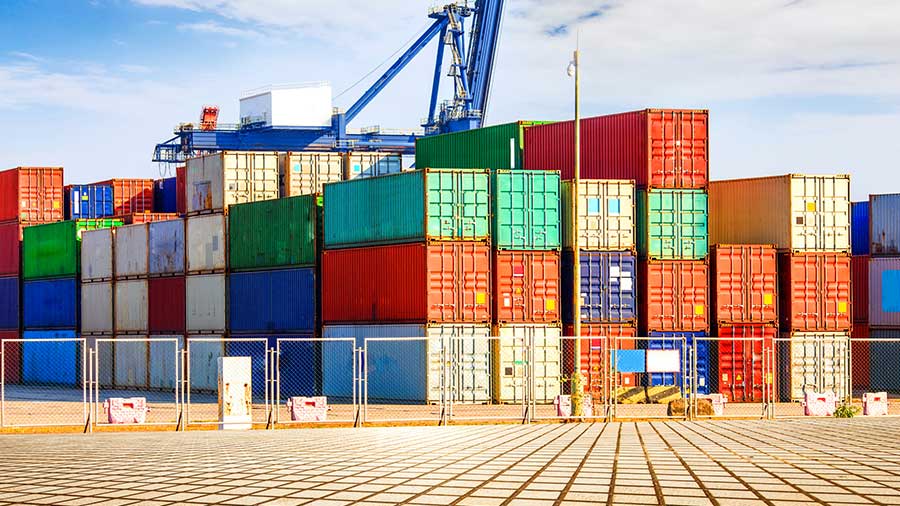Economic Growth Puts Vietnam on Track to Become Largest ASEAN Supplier to the U.S.
By Kangkyu Lee
HCMC – The American Chamber of Commerce (AmCham) predicts that Vietnam will become the largest ASEAN supplier to the United States by the end of 2014 – with a net export value of around US$29.4 billion. This would be a historical achievement for a nation surrounded by supply giants. In fact, Vietnam is likely to become the wealthiest Southeast Asian country in terms of trade. Additional statistics indicate that bilateral trade with the United States will surge to US$57 billion by 2020, cementing Vietnam’s prominence as a valuable hub for foreign investment and trade.
 RELATED: Dezan Shira & Associates’ Global Services
RELATED: Dezan Shira & Associates’ Global Services
To put these trends into perspective, Vietnam increased trade to the U.S. 36-fold since 2000 from a base export value of US$800 million. In the last 14 years, Vietnam made tremendous economic progress and now accounts for 22 percent of ASEAN’s trade to the United States. These numbers will only continue to grow – AmCham predicts that Vietnam will account for 34.1 percent of ASEAN’s total exports in 2020.
Made in Vietnam
The secret to Vietnam’s economic success lies in the across the board growth of its industries. From seafood, agriculture, and garments, Vietnam’s production capabilities are among the highest in Southeast Asia, beating out Malaysia, Thailand, and Indonesia. Within Ho Chi Minh City alone, high levels of demand keep all areas busy, especially demand for food. Record growing seasons for crops and fruit, such as dragon fruit, make Vietnam an attractive location to fill orders. Food companies expect to ship a total of 2000 tons of dragon fruit this year – an incredible increase of 700 tons since 2013.
This positive trend can also be seen in Vietnam’s seafood industry: Tran Thien Hai, chairman of the Vietnam Association of Seafood Exporters and Processors, states that shrimp exports to the US have increased 51.2 percent annually, currently reaching a grand total of US$820 million. Vietnam is now the third-largest shrimp exporter to the US, behind only Indonesia and India. Indeed, American demand for Vietnamese shrimp has increased due to a series of incidents in which Thai shrimp farms were stricken by a series of diseases.
Most impressive of all, however, is how quickly Vietnam’s garment industry has grown. AmCham states that Vietnamese garment exports have risen by 14.85 percent in the last month alone. China is the only nation that surpasses Vietnam in terms of net garment exports to the United States. However, manufacturers and investors are pivoting towards Vietnam; the conditions for setting up shop are economical and more convenient than doing so in China.
The numbers are certainly telling: Nguyen Van Le, the deputy director of the Dong Hung Company, reports that they have exported 1.78 million pairs of shoes worth (a value of US$34 million) to the US in 2014. Observations and studies also indicate that demand is not only growing in size but in complexity – a healthy sign of industry growth. There is also progress being made in the international sphere for Vietnam.
Key FTAs
With ongoing negotiations in the Trans-Pacific Partnership, the situation looks highly beneficial. Upon successful ratification, trade barriers will decrease significantly between the U.S. and Vietnam, a ground-breaking advantage over China, which is not included in the TPP. When combined with the fact that the average Vietnamese manufacturing worker is more skilled, Vietnam appears set to be a serious competitor to Chinese manufacturing in the future.
![]() RELATED: Vietnam-U.S. Relationship Shows Continued Signs of Improvement, TPP Progressing
RELATED: Vietnam-U.S. Relationship Shows Continued Signs of Improvement, TPP Progressing
The TPP is but one of many major trade deals under negotiation in the Asia region and which have the potential to benefit Vietnam, other key deals include the Regional Comprehensive Economic Partnership (RCEP), the ASEAN Economic Community (AEC), and the EU-Vietnam FTA. These agreements, as well as Vietnam’s WTO pledge to eliminate all barriers to foreign retailers by 2015, make Vietnam a very attractive location in which to set up operations.
Ongoing improvements
Vietnam has been working hard to improve its business environment; its recent actions have included such measures as slowly reforming its financial sector, streamlining business regulations, and improving the quality of its workforce. The country’s low-cost human resources are a crucial factor that has driven businesses to move their operations to Vietnam.
It is not just the government seeking to improve the workforce, private companies are also pitching in. For example, Sapporo IT Front signed a cooperative agreement with VINASA to carry out a large-scale project aimed at human resources development in the Hanoi IT industry. Another example is Japan International Cooperation Agency’s VND12.5 billion three-year commitment to developing a curriculum to train around 130 engineers and 10 university lecturers. Similarly, companies all over the world are finding potential in Vietnam and taking action for long-term investment.
This amalgam of growth signals is raising awareness of Vietnam’s financial and economic strength. Vietnamese industries recognize the importance of diversity and integrating a unique strategy to compete with countries like China. The combination of record breaking exports, industry health, and a variety of reforms are continuing to attract foreign investors. Recently, these factors also resulted in Fitch Rating’s decision to raise Vietnam’s credit rating. Starting from a deficit of 3.7 percent in 2010, the Vietnamese economy is on track for a projected surplus of 4.1 percent this year. It is clear why foreign investors see Vietnam as the next big opportunity in Asia.
Asia Briefing Ltd. is a subsidiary of Dezan Shira & Associates. Dezan Shira is a specialist foreign direct investment practice, providing corporate establishment, business advisory, tax advisory and compliance, accounting, payroll, due diligence and financial review services to multinationals investing in China, Hong Kong, India, Vietnam, Singapore and the rest of ASEAN. For further information, please email vietnam@dezshira.com or visit www.dezshira.com.
Stay up to date with the latest business and investment trends in Asia by subscribing to our complimentary update service featuring news, commentary and regulatory insight.
Related Reading
 Vietnam: A Guide to HR in Asia’s Next Growth Market
Vietnam: A Guide to HR in Asia’s Next Growth Market
In this issue of Vietnam Briefing, we attempt to clarify human resources (HR) and payroll processes in Vietnam. We first take you through the current trends affecting the HR landscape and then we delve into the process of hiring and paying your employees. We next look at what specific obligations an employer has to their employees. Additionally, we guide you through the often complex system of visas, work permits, and temporary residence cards. Finally, we highlight the benefits of outsourcing your payroll to a “pan-Asia” vendor.
 Tax, Accounting, and Audit in Vietnam 2014-2015
Tax, Accounting, and Audit in Vietnam 2014-2015
The first edition of Tax, Accounting, and Audit in Vietnam, published in 2014, offers a comprehensive overview of the major taxes foreign investors are likely to encounter when establishing or operating a business in Vietnam, as well as other tax-relevant obligations. This concise, detailed, yet pragmatic guide is ideal for CFOs, compliance officers and heads of accounting who need to be able to navigate the complex tax and accounting landscape in Vietnam in order to effectively manage and strategically plan their Vietnam operations.
 An Introduction to Doing Business in Vietnam 2014 (Second Edition)
An Introduction to Doing Business in Vietnam 2014 (Second Edition)
An Introduction to Doing Business in Vietnam 2014 (Second Edition) provides readers with an overview of the fundamentals of investing and conducting business in Vietnam. Compiled by Dezan Shira & Associates, a specialist foreign direct investment practice, this guide explains the basics of company establishment, annual compliance, taxation, human resources, payroll, and social insurance in the country.
- Previous Article Vietnam Seeks to Boost Foreign Direct Investment (FDI)
- Next Article Fitch Ratings Upgrades Vietnam

































